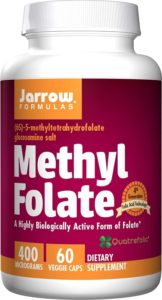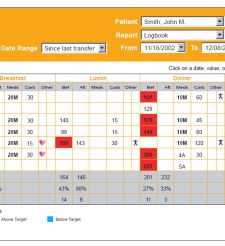Are You at Risk of Developing Diabetes?
So what does it mean to be pre-diabetic?
The people most likely to develop diabetes are those with impaired glucose tolerance or prediabetes. They are more than 1.5 times more likely to develop diabetes in the next five years than people with normal blood glucose levels.
The most powerful contributor to developing diabetes is becoming overweight or obese. Diabetes is not caused by eating too much sugar or other carbohydrates. Excess energy from too much fat, sugar and protein alone or in combination will all work the insulin-producing cells in the pancreas much harder. Anytime the intake of your kilojoules is greater than your body’s energy needs, the excess is stored as fat, initially under the skin and in the buttocks and breasts.

Unless they are very old, few people whose waist circumference is within the healthy reference range, will become diabetic. If you are obese however, you are four times more likely to develop type 2 diabetes than people whose waist circumference is within the healthy reference range.
Female Waist Circumference:
| Non-Asian | Asian | |
|---|---|---|
| Increased risk | 88-100 cm | 80-90 cm |
| Substantially increased risk | More than 100 cm | More than 90 cm |
Male Waist Circumference:
| Non-Asian | Asian | |
|---|---|---|
| Increased risk | 102-110 cm | 90-100 cm |
| Substantially increased risk | More than 110 cm | More than 100 cm |
Fifty percent of Americans are now overweight or obese and this is the main reason why rates of diabetes are rising. Diabetes is also influenced by generic, hormonal, gender and environmental factors.
What Increases your Risk of Getting Diabetes?
If you are inactive, of course this is going to significantly increase the risk of developing diabetes. Exercise is a very important means of controlling your weight and can burn off dangerous visceral fat. Regular physical activity improves the body’s sensitivity to insulin – so the pancreas doesn’t have to work as hard to do the same job.
Getting older increases your risk of diabetes as people tend to get fatter and less active as they get older. Controlling your weight, eating a healthy diet and some regular exercise are important for us all as we age.
Diabetes does tend to run in families, partly due to genes and partly because of similar lifestyle and diet habits and also the exposure to similar environmental factors. If either of your parents or your siblings has diabetes, you are five to six times more likely to develop diabetes yourself. If three family members are affected, you’re more than fifteen times more likely to develop diabetes yourself than someone without a diabetes history. A third of people with type 2 diabetes also has a close family member with diabetes.
Diabetes is more common in certain ethnic groups, such as Aboriginal and Torres Straight Islanders, Polynesians, Canadian and American Indians, Asians, Hispanics, Afro Americans and people from the Middle East. This is partly due to increased susceptibility to factors that cause diabetes more generally, such as obesity. As an example, a weight gain of 5 Kilos almost doubles the risk of diabetes in Asian people, compared with non-Asians.
Other Factors Associated with Increased Risk of Type 2 Diabetes Include:
- Gestational diabetes
- Polycystic ovary syndrome
- Heart disease and high blood pressure.
- Chronic depression.
- Heavy smoking
- High or low birth weight.
- Some medications, including steroids, beta-blockers, diuretics and some antipsychotics.
Do I have Diabetes or Pre-Diabetes?
Quite often, type 2 diabetes will begin as a silent disease and you won’t really be aware that you have it! Some of the symptoms you may be experiencing are:
- Vision problems
- Lack of energy.
- Becoming more irritable.
- Going to the toilet a lot more, and having to get up at night for this.
- Reduced libido.
- Fatigue.
Many people will simply blame these symptoms on ‘just a part of getting older’ or other problems. Most people diagnosed, may have even had the disease for five to ten years already! The sooner you know if you have diabetes, the more you can do to stop the progressions and to avoid complications.
How do I Test for Diabetes?
The most common ways to test for diabetes is an oral glucose tolerance test (OGTT), which involves an initial blood test, then drinking a large amount of glucose, then another blood test two hours later, to determine how quickly the glucose is cleared from your blood and balance restored. The OGTT is usually performed in the morning after fasting overnight. You can drink water beforehand, but not coffee tea or juice.
What should blood glucose levels be in healthy people?
In healthy people the blood glucose level from the second test should be below 7.8mM. Modestly elevated glucose levels – between 7.8 and 11.1 mM indicates impaired glucose intolerance – or prediabetes. Glucose levels above 11.1 mM confirms diabetes.
Two Random blood glucose level results above 11.1 mM, or a fasting glucose result greater than 7.8 mM on separate occasions, confirms a diagnosis of diabetes mellitus.
How do I reduce the risk of Diabetes?




 Your brain is around 60% fat so it should come as no surprise that the fatty acids found in fish oil can have a positive effect on your mood. Your hunter-gatherer ancestors consumed large amounts of these omega-3 fatty acids via wild game, fish, insects and eggs.
Your brain is around 60% fat so it should come as no surprise that the fatty acids found in fish oil can have a positive effect on your mood. Your hunter-gatherer ancestors consumed large amounts of these omega-3 fatty acids via wild game, fish, insects and eggs.

 After downloading the readings stored on the glucometer and transferring them to the database, various reports can be processed by the software, such as blood glucose trends, average readings, histograms, and pie charts. For instance, pie chart reports typically display blood glucose readings that fall in and out of an individual’s target range for every meal, in percentages.
After downloading the readings stored on the glucometer and transferring them to the database, various reports can be processed by the software, such as blood glucose trends, average readings, histograms, and pie charts. For instance, pie chart reports typically display blood glucose readings that fall in and out of an individual’s target range for every meal, in percentages. OneTouch Diabetes Management Software features easy-to-use icons and tabs that enable users to customize entries of diabetes-related information, making it easier to share with doctors.
OneTouch Diabetes Management Software features easy-to-use icons and tabs that enable users to customize entries of diabetes-related information, making it easier to share with doctors.